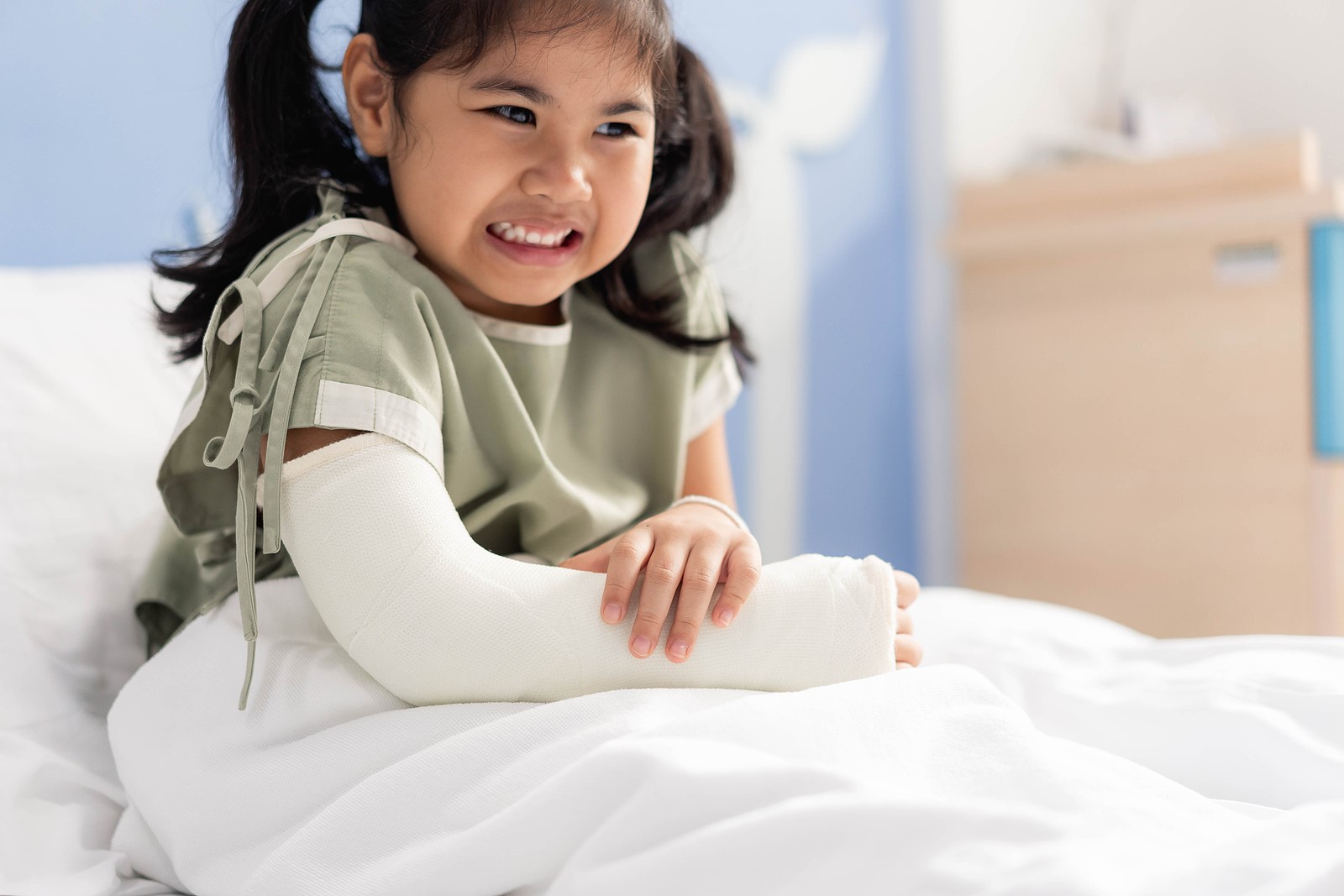
Broken Bone
Broken bone and bone fractures are almost inevitable. A broken bone is a common injury happening at any age. People may break a bone in their bodies when they get hit, fall, or by impact from an object. It’s the most common in young children because they spend a lot of time outdoors playing and tend to fall more often. Though they are not always serious injuries, broken bones need treatment immediately.
Parents and caregivers need to look out for signs of a broken bone because it may not show any symptoms right away in some cases. It’s essential to keep a few things in mind to avoid any delay in the treatment.
Broken Bone Explained
A broken bone, commonly known as a fracture, is a bone breakage. It occurs when more force is applied to the bone, sometimes excess than the bone can withstand.
The common childhood fractures include broken arm and elbow, wrist, broken shoulder, knee, and broken leg or ankle.
Pathologic fractures are those caused by diseases such as cancer; they weaken the bones and occur with little or no trauma. Osteoporosis is a disorder in which the bones thin and loses strength as they age, causing 1.5 million fractures in the US every year., especially in the hip, wrist, and spine. (Khatri 2021)
Growing bones tend to bend or buckle before breaking in children, leading to unique fracture patterns. For example, one side of a bone may bend, causing a greenstick fracture. But, one side of the bone may buckle and become dented, causing a buckle fracture.
Let’s understand further the different types of fractures.
Types of Broken Bone
- Greenstick fracture: It’s the bending or breaking on only one side of the bone. It resembles a broken tree branch
- Avulsion fracture: The fracture happens when a tendon or ligament pulls off a tiny piece of bone
- Buckle or torus fracture: It’s an outward bend on one side of the bone. In this case, the bone is dented but not broken
- Growth plate fracture: It’s a break in a child or teen’s growing bone
- Stress or hairline fracture: Most common type in children, it’s a tiny crack in the bone usually because of repetitive use of stress-bearing motions
- Comminuted fracture: It’s a more severe type of broken bone where a bone breaks into more than two pieces that no longer line up properly
- Compression fracture: It’s the collapsing of the bone under pressure. It can be severe if it involves a joint surface
(Kruse and Dubowy 2018)
Signs And Symptoms of a Broken Bone In Children
Most broken bones in children result from mild to moderate trauma such as a blow. It may not interfere with your child’s daily routine but may cause much pain, depending on the severity.
Some fractures need immediate medical attention and may require surgery. It’s essential to know the common symptoms to understand the severity of a broken bone.
- Bruising or swelling over a bone
- Deformity of a leg or an arm
- Severe pain in the injured area. It gets worse when any pressure is applied, or the area is moved
- Unable to bear weight on the affected leg, foot, or ankle
- Lack of movement or functionality in the injured area
- In open fractures, the skin remains intact, and the bone is protruding from it
It can be overbearing for a parent to see their child in pain. But a little preparation and immediate action can help get the treatment quickly.
But, even with precautions, some types of a broken bones are tough to avoid. A little preparation beforehand can help prevent injuries like warming up, wearing proper PPE, and observing safety precautions and best practices of a sport or activity.
Getting Help for a Child’s Broken Bone
If you notice one or more symptoms of a broken bone, ensure that your child is lying down and doesn’t panic. Wrap ice in a clean cloth and put it near the injured area to help reduce the pain. Avoid icing toddlers or infants as their skin is too soft, which may injure the skin.
Know where the nearest emergency room is that has little to no wait and has a radiology department on site. The faster your child is treated, the less stress they will experience as pain should be addressed first and foremost.
With the proper treatment, children’s bones heal faster than adults. Parenting is a tough job and we want you to know our board certified emergency care physicians are standing by to give your family excellent emergency care.
Works Cited
Khatri, Minesh. “Understanding Bone Fractures — Symptoms.” WebMD, WebMD, 28 July 2021, www.webmd.com/a-to-z-guides/understanding-fractures-symptoms.
“Broken Bones (for Parents) .” Edited by Richard W. Kruse and Susan M. Dubowy, KidsHealth, The Nemours Foundation, May 2018, kidshealth.org/en/parents/b-bone.html.
